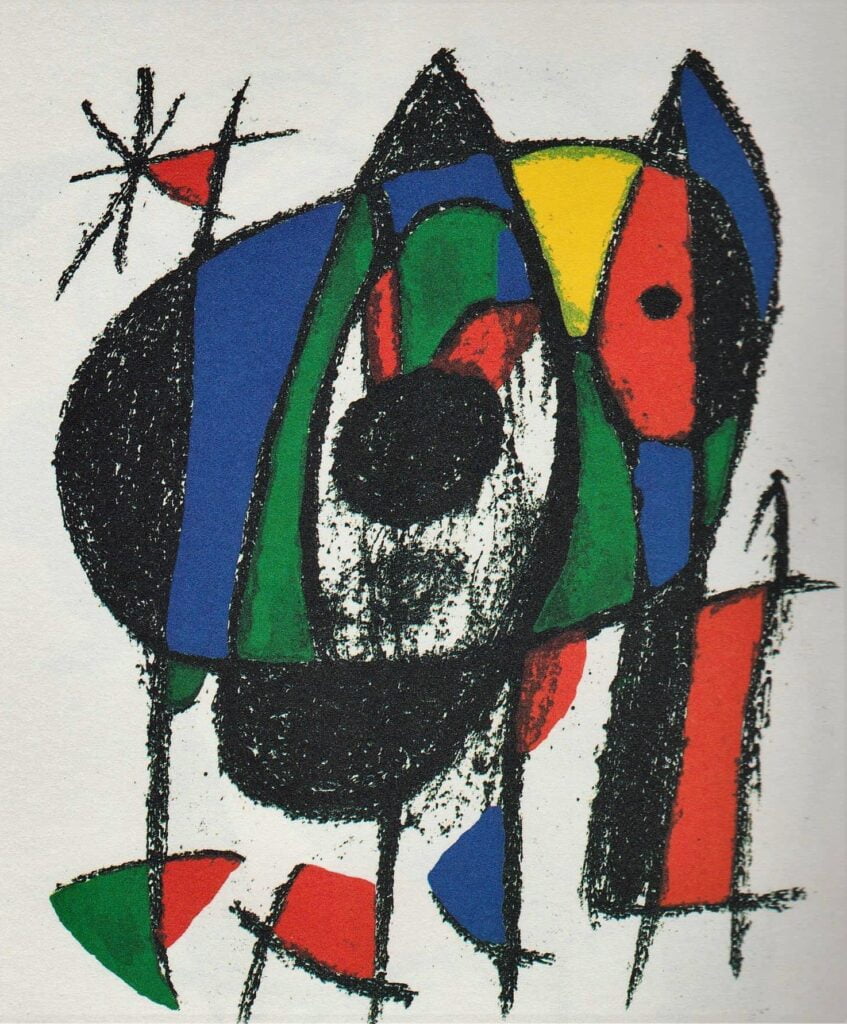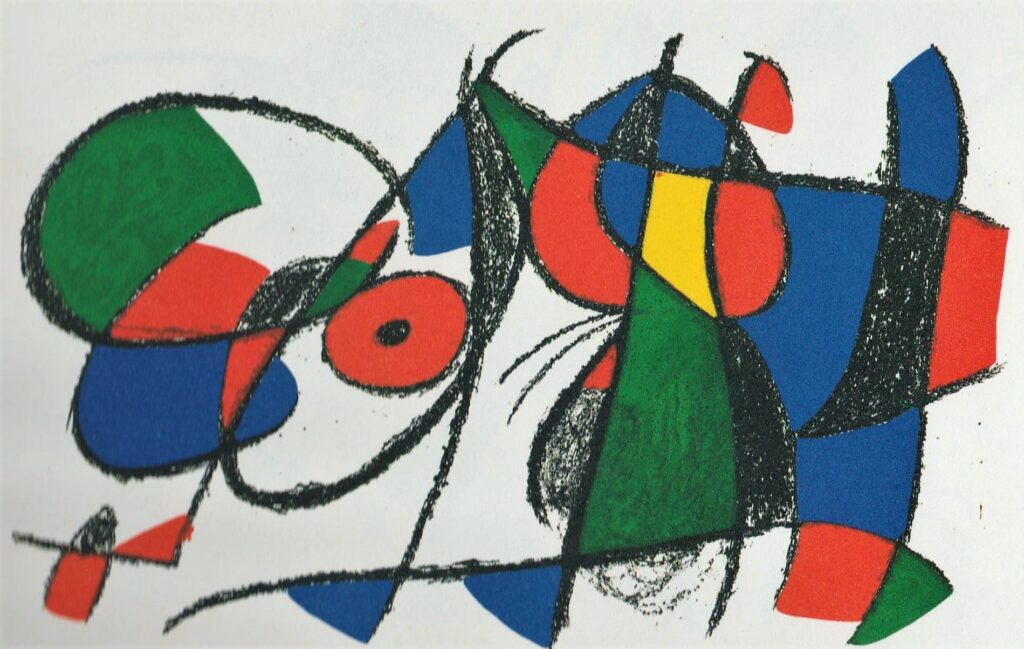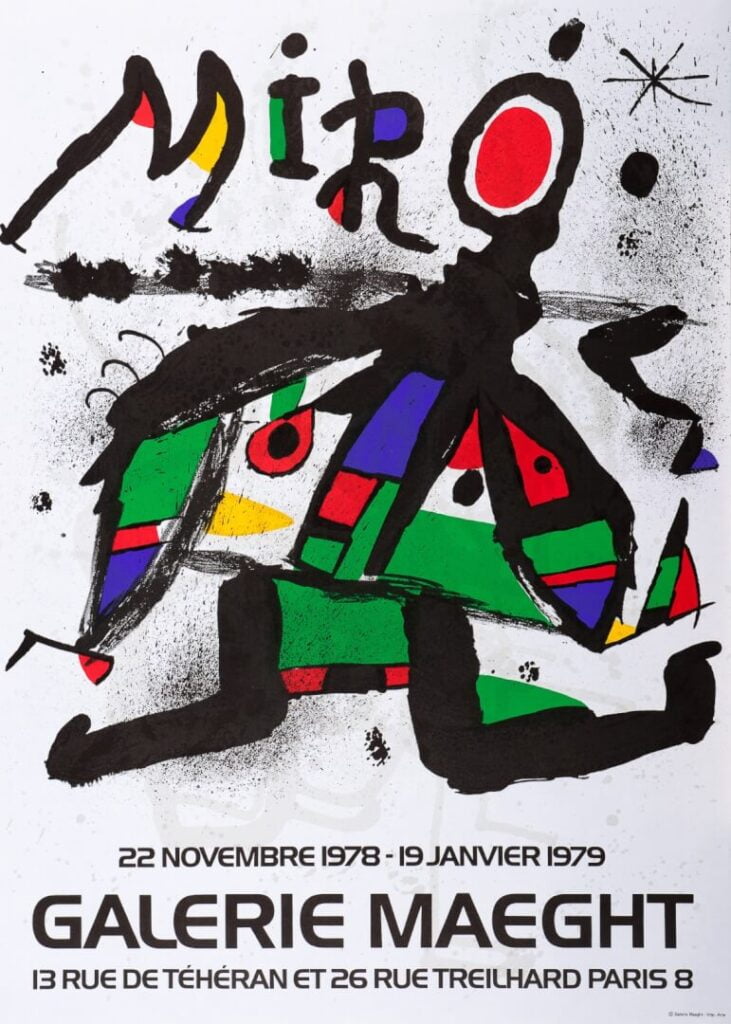- Works
- Bio
Bio
 Joan Miró i Ferrà born April 20, 1893 in Barcelona, died December 25, 1983 in Palma de Mallorca. Catalan painter, sculptor and ceramicist. His works, which belong to the Surrealism trend, reflect a return to childhood and are interpreted as “sandboxes for the subconscious.” Miró’s style is a combination of simple form and very vivid colors. The works reflect the artist’s longing for childhood, as they are associated with the drawings of a young child.
Joan Miró i Ferrà born April 20, 1893 in Barcelona, died December 25, 1983 in Palma de Mallorca. Catalan painter, sculptor and ceramicist. His works, which belong to the Surrealism trend, reflect a return to childhood and are interpreted as “sandboxes for the subconscious.” Miró’s style is a combination of simple form and very vivid colors. The works reflect the artist’s longing for childhood, as they are associated with the drawings of a young child.
Joan Miró was born the son of a goldsmith and a jeweler. He was to become a serious businessman, he even studied business in parallel with art. However, he did not work in the accounting profession for very long. Paying for it with a nervous breakdown, he devoted himself entirely to art.
Initially, Miró created in various styles, such as Fauvist and Cubist. After 1920, he settled in Paris, where he met Pablo Picasso, Vasily Kandinsky and other famous artists. In 1924 he joined the Surrealists in André Breton’s circle, but always remained somewhat on the sidelines. This fact allowed him to experiment with different styles without fear of being excluded from the community. This independence is strongly evident in his works.
Influenced by the Surrealists, he developed his individual style, that is, the juxtaposition of weightlessly placed colorful signs and poetic forms, which are associated with both the seemingly naive freshness of invention and the exuberant and baroque Catalan spirit. His style is “organic” forms and “flattened” drawing with sharp lines. Miró’s style finally developed in the early 1930s. In the 1970s. The characteristic vivid colors and simple forms are typical of Miró’s style. André Breton, the founder of Surrealism and one of its more radical theorists, called Miró “the most Surrealist of us all.” During these times, Miró gained fame and began to be recognized outside of France.
Between 1940 and 1948, Miró returned to Spain and began working with a variety of media: sculpture, ceramics and murals, or wall paintings. In 1947 he went to the United States for the first time, where he had several monographic exhibitions with the most important of them at the Museum of Modern Art in New York in 1951 and 1959. In 1954, Miró won a prize at the Venice Biennale.
In 1959, André Breton asked Miró to participate in the exhibition “Homage to Surrealism” along with Enrique Tábara, Salvador Dalí and Eugenio Granell. In the same year, Miró received the Guggenheim International Award. In the early 1960s. In the 1970s, his work was appreciated by the world’s major museums, which organized exhibitions for him, and Miró created illustrations, lithographs and monumental sculptures for the Maeghta Foundation, founded by Aimeé Maeghta, a famous art dealer.
Miró received an honorary doctorate from Harvard University in 1968 and from the University of Barcelona in 1979. In 1968, he completed a commission for two large ceramic compositions for the UNESCO headquarters in Paris – “Wall of the Moon” and “Wall of the Sun.” In 1972, the Miró Foundation was established, a contemporary art museum dedicated to his work.
In 1980, Miró received the Gold Medal of Fine Arts from King Juan Carlos of Spain.
Toward the end of his life, Miró began to use different forms of expression, creating, among other things, hundreds of ceramics.
He died at his home in Palma de Mallorca on December 25, 1983.
Many of his works can be seen at the Joan Miró Foundation in Montjuïc, Barcelona, and the National Gallery of Art in Washington, DC.






